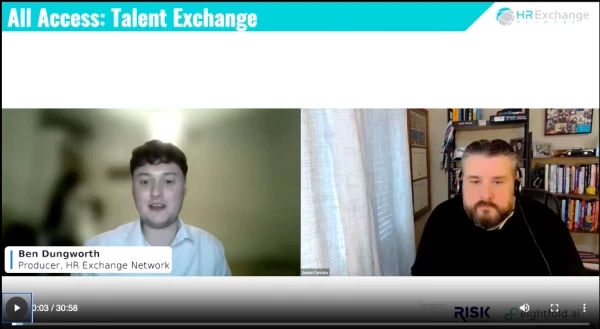
I remember my very first interview with GitLab co-founder and CEO Sid Sijbrandij.
In fact, I vividly recall the very first question he asked me: “I see you’re working for a great company today. What first attracted you to consider GitLab...and why?”
There were many thoughts spinning through my head, centered on GitLab’s culture, people, product, and values as I blurted out the truth: “I love my current company, but working remotely isn’t an option here. I’ve been living apart from my family for the past four years to accommodate what has been an incredible career opportunity. What first attracted me was the chance to reunite with my wife and daughters.”
Before I finished answering, Sid had already screen-shared the Family and Friends First, Work Second page from GitLab’s Handbook. He then responded, “Thanks for being so open with me about that, Dave. It’s exactly the right answer because it aligns with our values.”
Makes all-remote recruiting sound deceptively simple, right?
Spoiler alert: it’s not.
There are some best practices for all-remote recruiting to be aware of and I’ll illustrate how those examples connect back to my personal experience as a GitLab candidate here.
Hire from (Almost) Anywhere
At GitLab, we attract talent from a diverse, global pool. We’ve built a scalable hiring model that enables us to attract top talent in areas that aren’t typically considered hubs for tech. This allows us to be more inclusive of caregivers, military spouses, those with mobility challenges, or people who may otherwise opt out of the workforce when a commute is mandatory.
We’re able to focus hiring decisions on results rather than location. Here’s a personal example: The VP Recruiting search was one of the rare roles where GitLab partnered with a retained search firm. My initial connection was through the talent partner at one of GitLab’s venture capital investors. As I explored the Handbook, I remember being impressed by how truly global GitLab was---team members in more than 65 countries before I even joined!
Hire for Values Fit, Not Culture Fit
We assess for values fit — which requires detailed, well-documented values that are discussed during the interview process.This gives us a defined set of behaviors we want all candidates to buy into. This is particularly important in an all-remote setting.
Hiring for values fit helps guide interview conversations to specific examples so that both parties can decide if your company is a fit. It’s crucial to model your values throughout the hiring process.
We want cultural diversity instead of cultural conformity, such as a “brogrammer” atmosphere. Said differently: "culture add" > "culture fit" or "hire for culture contribution" since our mission is that everyone can contribute.
To provide another personal example: The aforementioned exchange with Sid only scratched the surface. Every interaction I had with GitLab highlighted CREDIT Values, and my research on the company helped me see how GitLab actually lived those values. I shared more about my personal experience as a remote team member on LinkedIn soon after joining the team.
Transparency & Expectation Setting
The full process — from interviewing to career development once onboard — is transparently outlined in the GitLab handbook, removing mystery and guesswork.
It’s a more efficient use of everyone’s time if they know what to expect (Interviews/assessment tools, types of questions, next steps, etc.). In answering Sid’s first question, I learned not just about how the company valued family/friends, but also how authentically valued transparency is (including from me as a candidate).
The CEO made clear that he appreciated me sharing my personal/family reasons for considering the career move. That connection built trust early in the interview, setting the stage for him to ask deeper behavioral interview/assessment questions.
Focus on Candidate Experience
Schedule interviews efficiently, within a 2 week timeframe if possible (i.e. have team members on interview panels prioritize interviewing).
Measure and report on candidate experience. We review feedback from our own candidate surveys as well as other sites like Glassdoor for improving our candidate experience, and we measure interviewee satisfaction as a KPI for recruiting. Bring your team, culture, and values to life to candidates.
The loop for the VP Recruiting role was comprehensive, including multiple interviews with the CEO (as hiring manager), members of the executive team, peers, direct reports and board members. GitLab also spoke to 6 references (mostly conducted by Sid personally).
As a talent leader myself, I was impressed by how much thought and care went into designing the process (if not a little intimidated!). This was the first company I’d interviewed with in four years. I appreciated knowing exactly what I was committing to as I made the decision to enter the candidate/interview process.
We've published an extensive content library about all-remote work, including best practices for all-remote recruiting and hiring. Our hope is that these examples will spark ideas for other companies as they explore remote work and iterate on their recruiting model for the future.
Photo Courtesy of Pexels

























